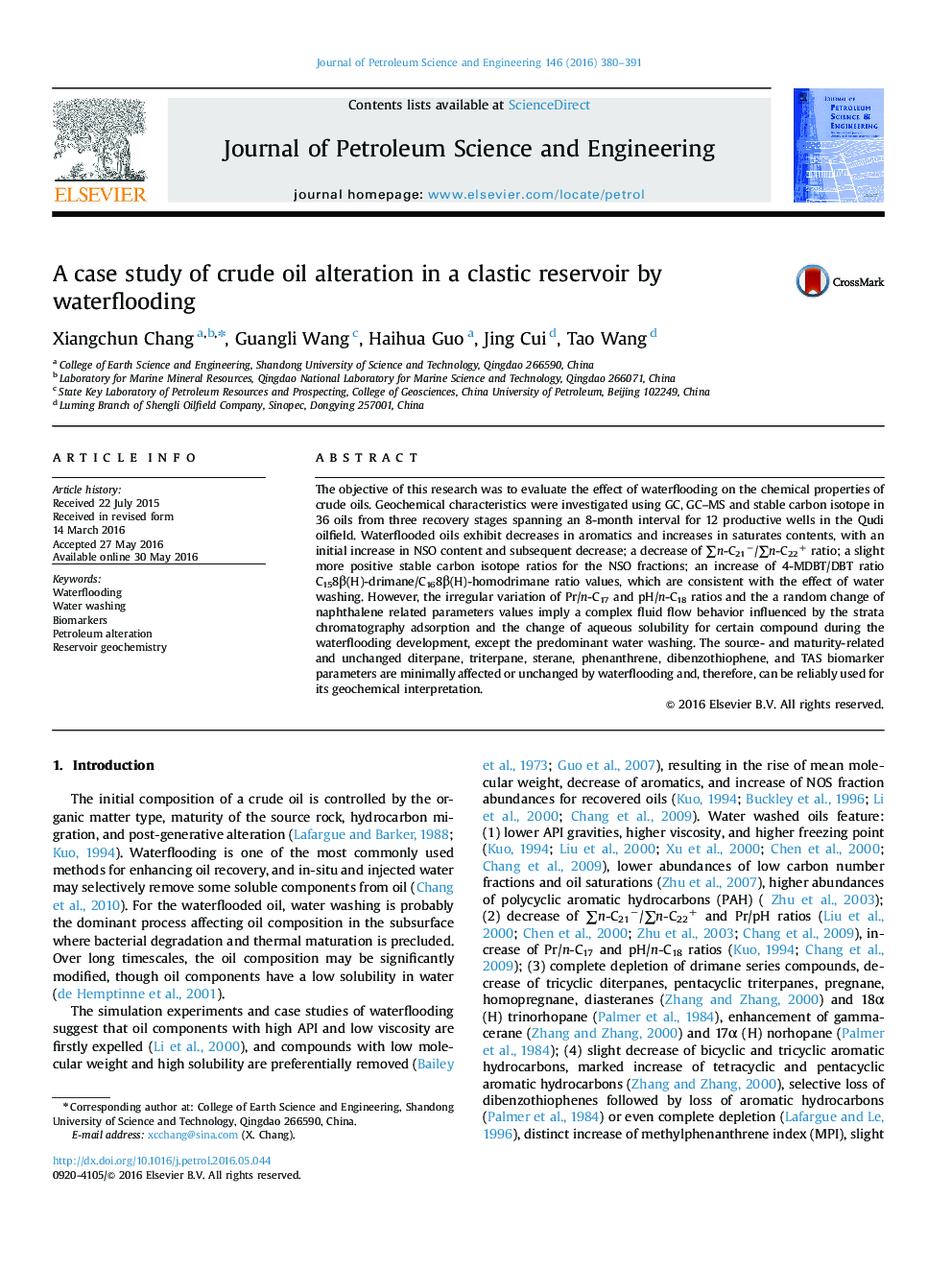| Article ID | Journal | Published Year | Pages | File Type |
|---|---|---|---|---|
| 1754517 | Journal of Petroleum Science and Engineering | 2016 | 12 Pages |
•Oil alterations modified by waterflooding are investigated.•Alterations are mainly consistent with the effect of water washing.•The strata chromatography adsorption and change of aqueous solubility complicate the modification.•Regularly varied, minimally affected or unchanged biomarker parameters can still be reliably used.
The objective of this research was to evaluate the effect of waterflooding on the chemical properties of crude oils. Geochemical characteristics were investigated using GC, GC–MS and stable carbon isotope in 36 oils from three recovery stages spanning an 8-month interval for 12 productive wells in the Qudi oilfield. Waterflooded oils exhibit decreases in aromatics and increases in saturates contents, with an initial increase in NSO content and subsequent decrease; a decrease of ∑n-C21−/∑n-C22+ ratio; a slight more positive stable carbon isotope ratios for the NSO fractions; an increase of 4-MDBT/DBT ratio C158β(H)-drimane/C168β(H)-homodrimane ratio values, which are consistent with the effect of water washing. However, the irregular variation of Pr/n-C17 and pH/n-C18 ratios and the a random change of naphthalene related parameters values imply a complex fluid flow behavior influenced by the strata chromatography adsorption and the change of aqueous solubility for certain compound during the waterflooding development, except the predominant water washing. The source- and maturity-related and unchanged diterpane, triterpane, sterane, phenanthrene, dibenzothiophene, and TAS biomarker parameters are minimally affected or unchanged by waterflooding and, therefore, can be reliably used for its geochemical interpretation.
